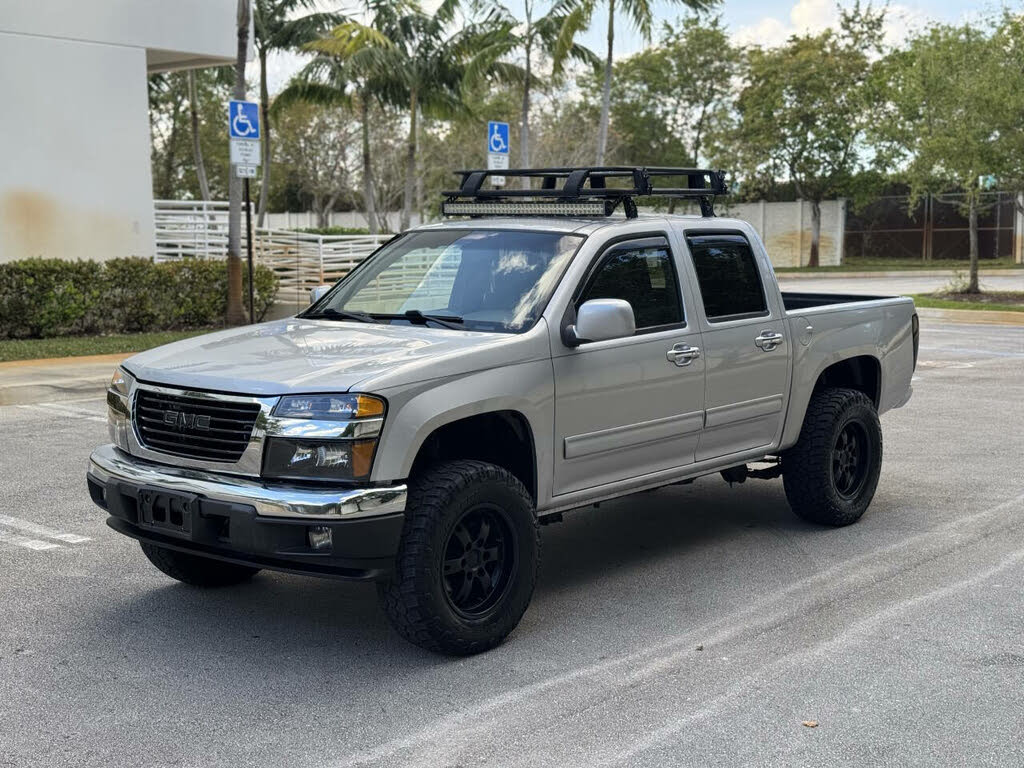In the world of pickups, durability and utility reign supreme. These rugged vehicles are more than just modes of transport—they are workhorses, weekend warriors, and trusted partners in everything from hauling construction materials to towing boats for family vacations.
Among the many factors that determine a pickup’s reliability and longevity, the condition and protection of the truck bed stand out as crucial.
The bed is where the tough work happens, yet it is also one of the most vulnerable parts of the truck.
Exposure to the elements, heavy cargo, abrasions, and corrosive materials makes it prone to wear and tear. This is why the choice of bedliner—and understanding the propensity for rust in the bed—can be a game-changer for truck owners.
Spray-in bedliners have become a popular solution to protect truck beds against damage and corrosion.
Unlike traditional drop-in liners, spray-in liners form a permanent, durable coating that adheres directly to the bed’s surface. This creates a seamless barrier that prevents moisture intrusion, reduces dents and scratches, and enhances the truck’s overall appearance.
Because they are factory applied or professionally installed, spray-in liners also maintain the bed’s original dimensions, ensuring that cargo management systems and tie-downs remain fully functional.
The technology behind spray-in liners has evolved rapidly, with materials engineered for UV resistance, chemical tolerance, and superior impact absorption.
Many pickup manufacturers recognize the importance of factory-installed spray-in bedliners.
Offering these liners as options or standard features on certain trims provides buyers with peace of mind, knowing their truck beds will stand up to the harshest conditions from day one.
Trucks like the Ford F-150, Toyota Tundra, Ram 1500, Chevrolet Silverado 1500, and GMC Sierra 1500 offer some of the best factory spray-in bedliners on the market.
These trucks benefit from precision application processes, durable polyurethane or polyurea-based coatings, and designs that integrate the liner with the bed’s structural and functional features.
However, not all pickups offer the same level of protection. Rust remains a significant concern for many truck owners, especially those with older models or certain brands that didn’t prioritize corrosion resistance in the bed.
Rust-prone beds can rapidly deteriorate, leading to expensive repairs, structural weakness, and decreased resale value.
Models like the Nissan Frontier, early Dodge Ram 2500s, Chevrolet Colorado, GMC Canyon, and pre-2016 Toyota Tacoma have earned reputations for being susceptible to rust due to thin or untreated steel, poor drainage design, and inadequate factory coatings.
For these trucks, additional measures such as aftermarket spray-in liners, regular maintenance, and rustproofing treatments are critical.
Understanding which pickups come with the best spray-in bedliners—and which ones tend to have rust-prone beds—is essential for buyers, owners, and enthusiasts alike.
This knowledge empowers truck users to make informed decisions about maintenance, upgrades, and purchasing.
Choosing a pickup with a durable factory spray-in liner can save significant time and money down the road, while recognizing rust risks can prompt proactive steps that extend the vehicle’s service life.
In this article, we will explore five pickups known for having the best factory spray-in bedliners, highlighting what makes their coatings stand out in terms of durability, protection, and design integration.
Following that, we will delve into five pickups whose beds are notorious for rust problems, examining the causes and consequences of corrosion vulnerabilities.
By providing an in-depth analysis of these factors, this guide aims to help current and prospective truck owners safeguard one of their vehicle’s most valuable and vulnerable components—the truck bed.
Also Read: Top 12 Cars That Run Like New Even After 15 Years With Minimal Maintenance
5 Pickups with the Best Spray-In Bedliners
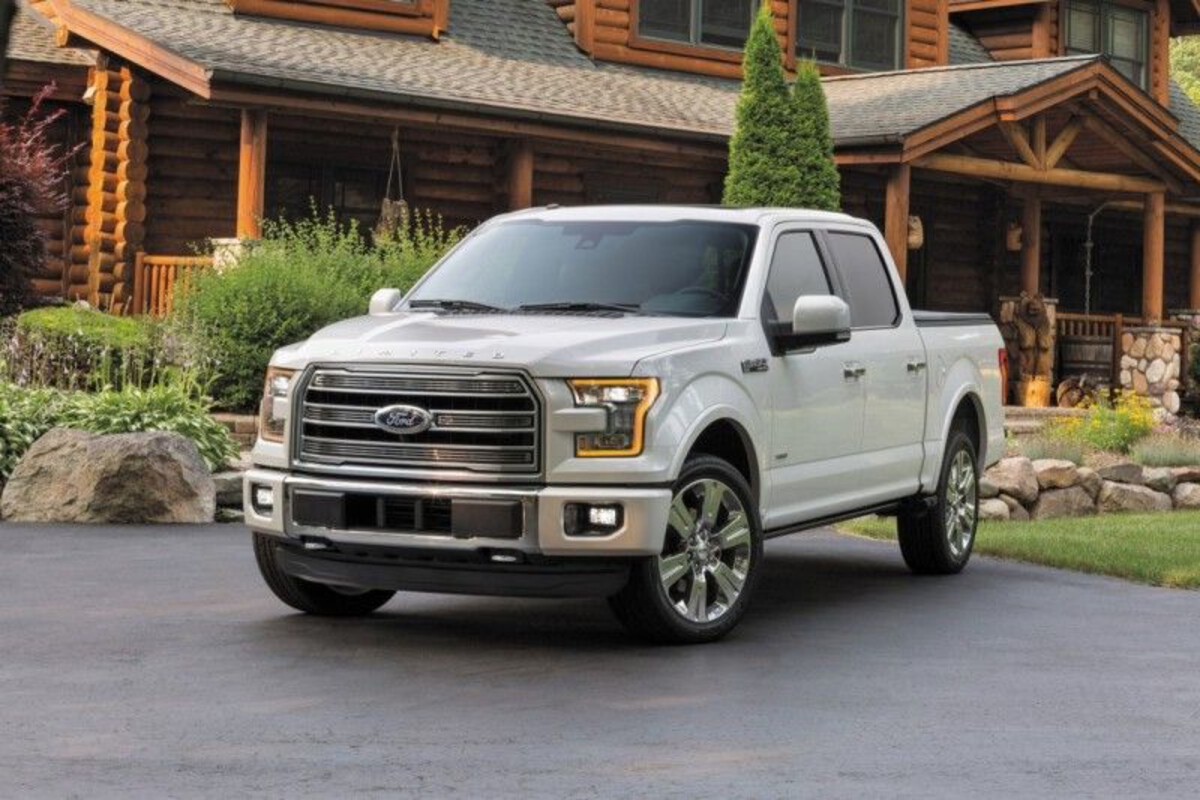
1. Ford F-150
The Ford F-150 is a staple of the American pickup world, and one of the key reasons for its dominance in the market is the range of options it offers for durability and utility. Among those, the factory spray-in bedliner is a standout.
Ford’s liner is applied using high-pressure equipment at the factory with robotic precision, creating a uniform, nonporous coating that bonds directly to the bed’s aluminum surface.
Unlike aftermarket liners, this factory-applied option is backed by the truck’s warranty and integrates seamlessly into the design of the bed.
One of the most significant advantages of the F-150’s spray-in liner is its toughness. It resists cuts, gouges, and abrasions that commonly occur when hauling heavy tools, lumber, gravel, or machinery.
The liner is also UV-stable, meaning it doesn’t fade or break down under constant exposure to sunlight—something that’s especially important for work trucks that live outdoors.
This level of durability ensures that the truck bed retains its structural integrity and resale value over time, especially in regions with rough terrain or harsh climates.
Another benefit is its anti-slip texture. While some may find the rough surface slightly abrasive on the knees, most owners appreciate that cargo stays more secure during transport.
The textured surface helps prevent items from sliding around, reducing the risk of damage to both the cargo and the bed. This is particularly helpful for contractors or tradespeople who often transport tools and equipment that can’t afford to be damaged in transit.
In addition, Ford integrates additional protective features like tailgate step liners and bed rail caps that work in harmony with the bedliner. These enhancements ensure that not only the bed floor but also high-contact zones like the tailgate and side edges are equally protected.
The liner is also engineered to resist chemical exposure, so whether it’s gasoline, oil, or cleaning solvents, you won’t be left with unsightly stains or deterioration.
Perhaps most importantly, Ford allows buyers to roll this option into their purchase or lease deal. That means no trips to aftermarket shops and no risk of improper application.
For fleet buyers or small business owners who need trucks ready for work on day one, this convenience, combined with OEM-level quality, makes the F-150 one of the best on the market for factory spray-in bedliners.
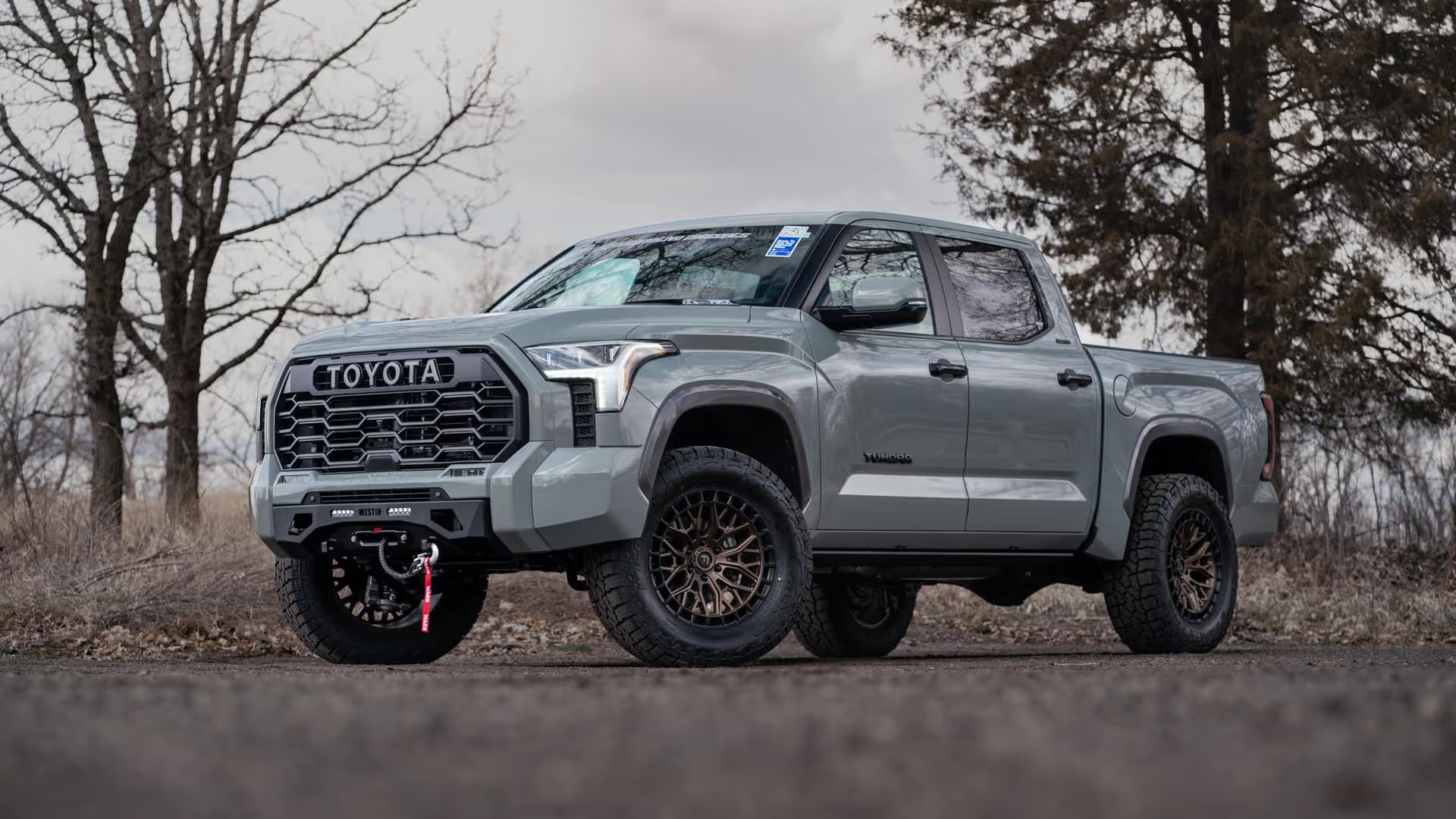
2. Toyota Tundra
The Toyota Tundra has built a rock-solid reputation for reliability and ruggedness, and its bedliner game is no exception.
Toyota offers a factory-installed spray-in liner that is highly durable, practical, and perfectly suited to the truck’s role as a long-haul workhorse or adventure rig.
The Tundra’s liner is bonded tightly to the bed using a high-grade polyurethane-based formula that resists wear from even the most abrasive loads. It also covers the tailgate and sidewalls, providing complete protection for all high-traffic contact areas.
Toyota doesn’t cut corners when it comes to preparing the bed for the liner. The surface is carefully prepped and cleaned before the liner is sprayed, ensuring that the coating adheres properly and doesn’t peel, crack, or blister over time.
This meticulous process is part of Toyota’s commitment to long-term quality, and it shows in the finish—clean, uniform, and ruggedly handsome.
The material used is also resistant to corrosion and water damage, which is critical for owners in coastal or snowy regions where road salt and humidity are constant threats.
The bedliner in the Tundra is also thicker than most aftermarket options. That extra material provides not just better impact protection, but also helps deaden sound.
Hauling metal tools or loose equipment? You’ll notice significantly less rattling and noise echoing through the cab.
This seemingly minor feature can make a big difference for drivers who use their trucks daily, especially for long commutes or jobsite work where comfort matters just as much as durability.
Toyota also offers a modular bed rail system and accessory tie-down points that work seamlessly with the liner.
These rails and cleats don’t interfere with the liner and remain fully functional, allowing owners to secure cargo in various configurations without compromising protection. Whether you’re carrying dirt bikes, ATVs, or plywood, the liner works with—not against—other bed utility features.
Finally, the spray-in liner is covered under Toyota’s factory warranty, which means you’re protected if any defects or peeling occur. This adds extra peace of mind for owners who want a no-hassle experience from purchase to daily use.
The combination of ruggedness, thoughtful design, and Toyota’s reputation for durability make the Tundra a clear top-tier choice for anyone prioritizing bed protection.
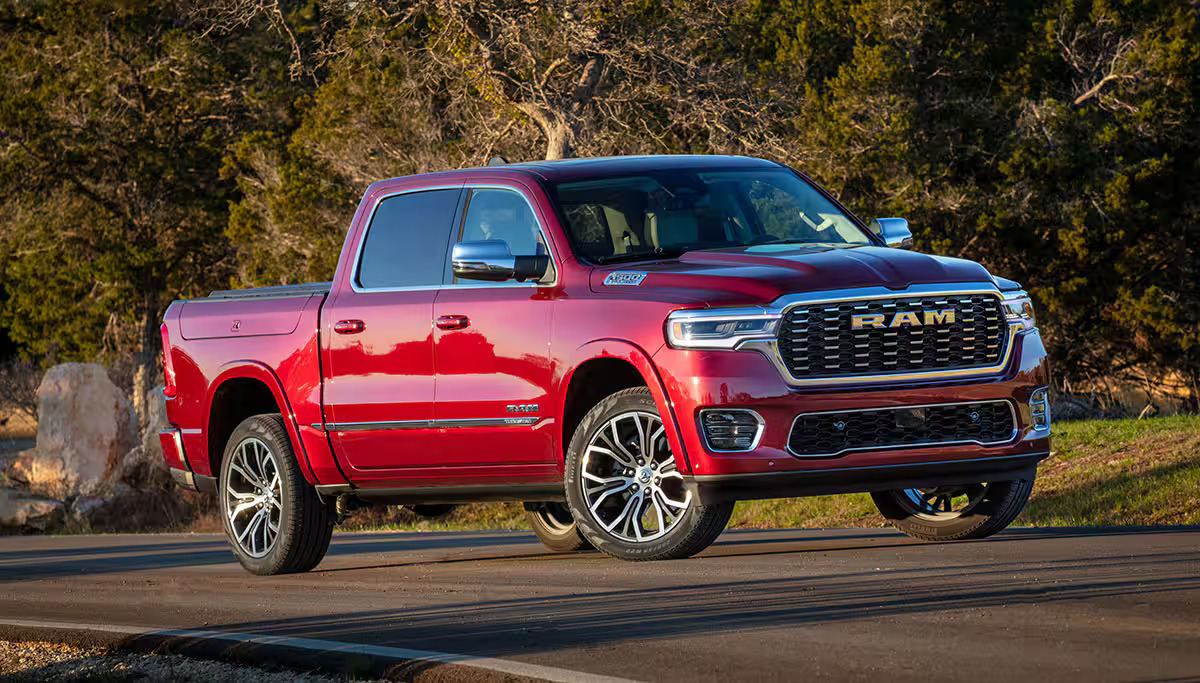
3. Ram 1500
Ram has steadily climbed the ranks in recent years with its combination of comfort, performance, and attention to detail—and the Ram 1500 is no exception when it comes to bedliner quality.
The factory-applied spray-in liner available on Ram trucks is made from a durable, elastomeric polyurethane material designed to resist abrasion, water damage, and chemical spills. It also complements the Ram 1500’s luxurious interior by reducing cargo rattle and providing a quieter ride.
The liner’s application process is carefully controlled at the factory, with thorough surface prep and precision spraying to ensure an even and bonded coating.
Ram includes coverage for the tailgate, bed walls, and even the upper bed rails, offering 360-degree protection.
The texture is slightly rubberized, giving it a nice balance between traction and comfort, particularly helpful if you’re loading gear by hand or using the truck bed for camping or tailgating.
Ram also pairs its spray-in liner with other helpful features, such as the optional RamBox Cargo Management System and adjustable tie-down cleats.
The liner is specifically molded around these accessories, so you don’t lose functionality or compromise on weatherproofing. It integrates with these features so smoothly that it feels custom-built for each configuration.
There are no unsightly gaps or uneven edges, and the liner doesn’t interfere with drainage channels or lighting. Owners consistently praise how well the bedliner stands up to abuse.
Whether it’s hauling firewood, concrete blocks, or messy landscaping supplies, the liner resists damage and washes clean with minimal effort. It’s also known for its ability to retain its appearance over time.
Years after installation, it still looks nearly new with only occasional maintenance, unlike some aftermarket alternatives that start fading, peeling, or developing bubbles.
Moreover, Ram offers the spray-in liner across a wide variety of trims and packages, from the work-ready Tradesman to the luxurious Limited.
This accessibility makes it easy for buyers at all price points to get reliable bed protection without having to seek third-party solutions. The Ram 1500 combines rugged utility with smart engineering, making its bedliner system one of the most well-rounded in the full-size pickup class.
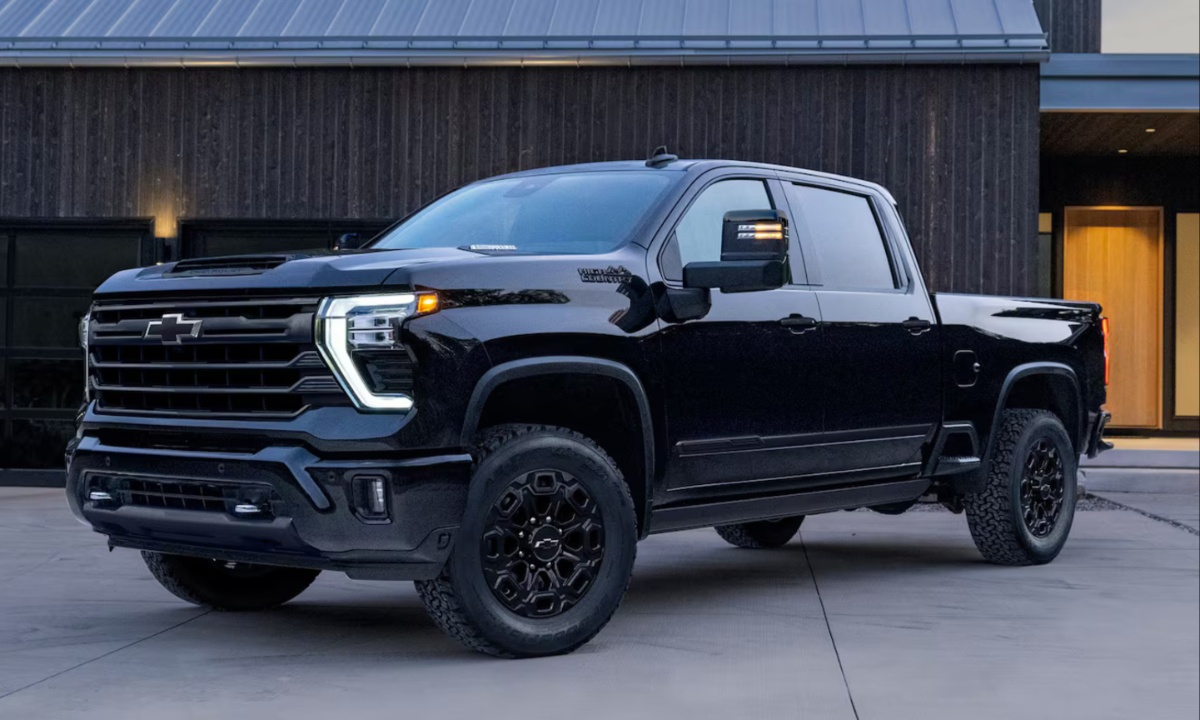
4. Chevrolet Silverado 1500
Chevrolet’s Silverado 1500 has been a favorite among truck buyers for decades, and its available spray-in bedliner option plays a big role in its practical appeal.
The liner is a factory-applied, high-pressure polyurea blend that provides a tough, permanent coating to the truck bed. Unlike drop-in liners that can shift and trap moisture, this spray-in liner bonds to the metal to create a watertight seal that prevents rust and corrosion from getting a foothold.
The Silverado’s liner is available as a standalone option or as part of various trim packages, including work and off-road models.
It offers protection across all surfaces—floor, walls, and tailgate—and is sprayed in a way that preserves key functional areas like drainage points and cargo tie-down hooks. This attention to detail means you don’t lose bed functionality while gaining a high level of durability and protection.
One of the Silverado’s strengths is the toughness of the liner material itself. Owners routinely report that it handles extreme loads and heavy impacts with minimal wear.
This includes moving steel parts, concrete, or farm equipment—all without leaving gouges or scratches. Additionally, the material has a semi-gloss finish that resists UV degradation and fading, maintaining its appearance longer than many third-party options.
Another reason the Silverado 1500 earns a top spot is Chevrolet’s warranty integration. Since the liner is factory-applied, it is covered under the truck’s new vehicle limited warranty.
This ensures any manufacturing defects in the application process or material will be resolved at no extra cost to the owner. It’s a level of assurance you rarely get from local spray-in shops, no matter how experienced they are.
Finally, the Silverado’s bedliner comes as part of a broader suite of bed-focused features, including multiple tie-down points, a 120V power outlet, bed lighting, and the Multi-Flex Tailgate.
When combined, these make the truck’s bed one of the most functional and well-protected in the segment. For buyers who value practical durability and integrated design, the Silverado’s factory spray-in liner is a strong contender.
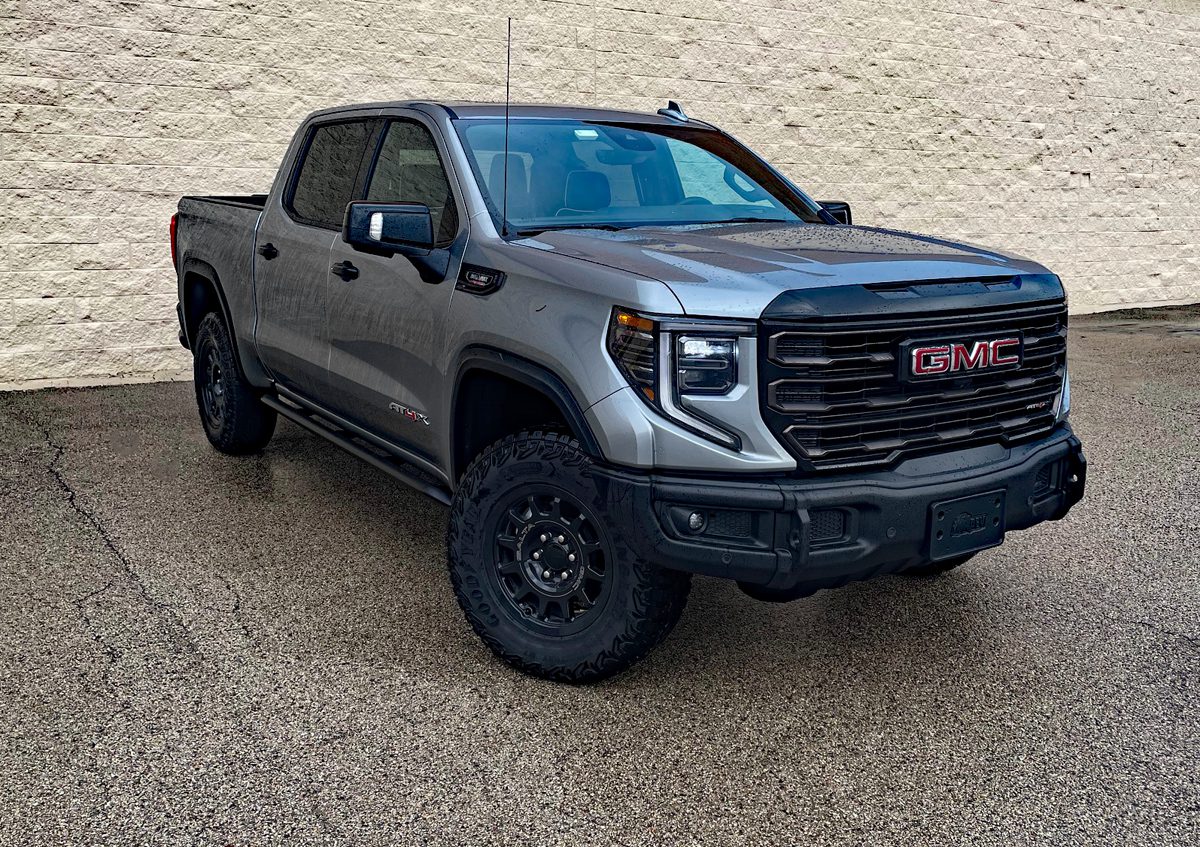
5. GMC Sierra 1500
Closely related to the Chevrolet Silverado, the GMC Sierra 1500 takes many of the same strengths and elevates them with added refinement.
The factory spray-in bedliner offered on the Sierra is essentially the same tough, polyurea-based coating used on its Chevrolet sibling, but is applied with slightly more emphasis on premium finishing.
GMC positions itself as the more upscale alternative, and the bedliner reflects that philosophy with a smoother finish and cleaner cut lines.
The Sierra’s bedliner is not only tough but also tailored to work seamlessly with GMC-exclusive features like the MultiPro Tailgate and carbon-fiber composite bed option available on higher trims.
The spray-in liner is molded precisely to these components, ensuring full protection without compromising the truck’s advanced bed functionality.
The MultiPro Tailgate, with its multiple configurations for loading and unloading, benefits greatly from the liner’s seamless coverage, which prevents rust and damage in areas prone to heavy use and impact.
Even the composite bed option, which is lighter and corrosion-resistant on its own, receives a protective coating in key areas to safeguard against scratches and UV exposure.
The liner material used in the Sierra is engineered to offer superior chemical resistance. Whether it’s from spilled fuel, oils, or harsh cleaning agents, the polyurea blend maintains its integrity and appearance over time.
This is especially important for owners who use their trucks in industrial or agricultural settings, where exposure to corrosive substances is common. The liner also maintains its flexibility across a wide temperature range, so it won’t crack or become brittle in cold climates or blister under intense summer heat.
Aesthetic considerations are also noteworthy. GMC’s spray-in liner boasts a consistent texture and finish that matches the truck’s upscale interior and exterior styling cues.
It provides a subtle sheen that doesn’t look industrial or unfinished, helping maintain the Sierra’s premium feel even in the rugged bed. For owners who use their trucks for both work and weekend adventures, this balance of toughness and style is a significant advantage.
Finally, like the Silverado, the Sierra’s factory spray-in bedliner comes with the full backing of GMC’s warranty program. This coverage means owners don’t need to worry about defects or early wear and tear affecting their investment.
The OEM application and factory-quality materials make the Sierra’s liner one of the most durable and reliable choices in the segment. For buyers wanting a combination of upscale features and rugged durability, the GMC Sierra 1500’s spray-in bedliner is a top contender.
5 Pickups with Rust-Prone Beds
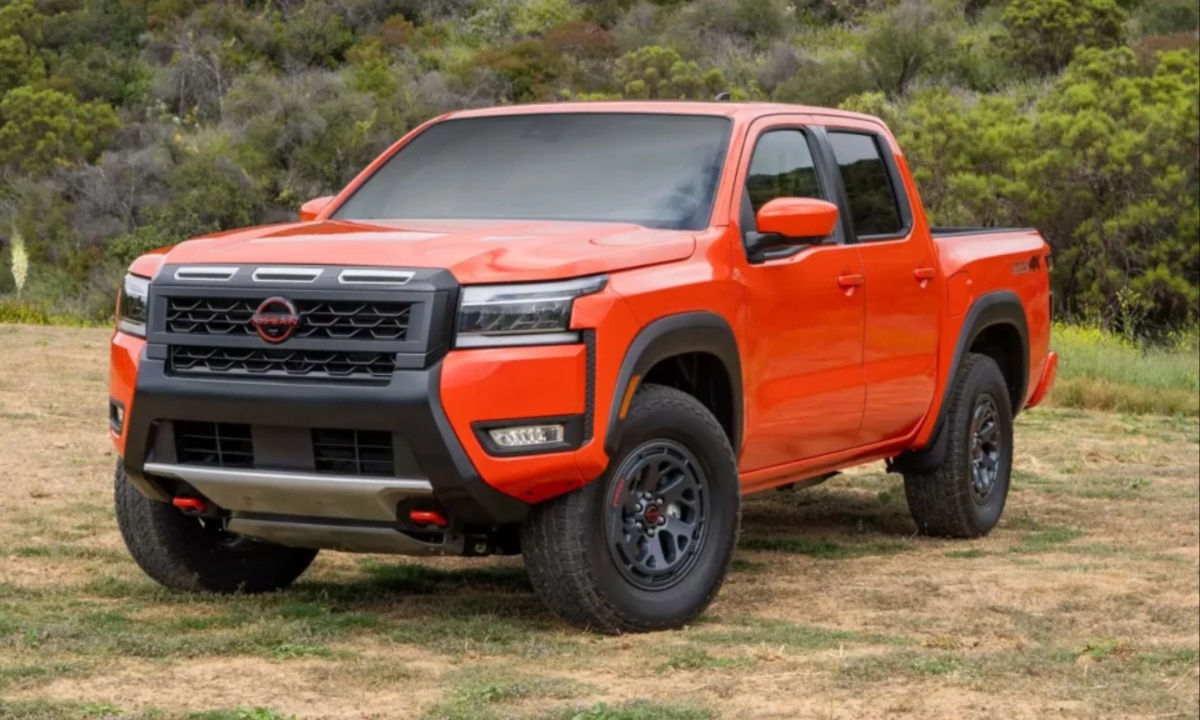
1. Nissan Frontier
The Nissan Frontier, while praised for its affordability and reliability in other areas, has long struggled with rust issues, particularly in the truck bed.
One of the main reasons for the Frontier’s rust-prone bed is the choice of steel and the lack of adequate factory protective coatings.
Early and even some recent model years used untreated or only lightly treated steel in the bed area, which, when exposed to moisture, dirt, and road salt, tends to corrode faster than competitors with better corrosion management systems.
Additionally, the Frontier’s design includes tight corners and flat areas that trap water and debris, creating ideal breeding grounds for rust to start.
These hard-to-clean spots accumulate dirt, moisture, and even salt residue in winter climates, which accelerates the rusting process from the inside out. Unfortunately, Nissan’s factory bed protection options are often limited or inconsistent, with many owners reporting that aftermarket liners are necessary right from the start to combat this issue.
Another contributing factor is the relatively thin gauge of metal used in the bed compared to other midsize pickups. This thinner metal, while beneficial for weight savings and fuel efficiency, sacrifices long-term durability against rust and dents.
Over time, the combination of thinner steel, poor drainage design, and insufficient corrosion protection leads to rust spots that not only damage the appearance but can also compromise the structural integrity of the bed.
The rust issue is compounded by the fact that the Frontier doesn’t always come with factory spray-in liners or adequate undercoating, especially in base models.
Many owners who purchase the Frontier for rugged use end up having to invest in aftermarket spray-in liners or rubberized coatings to protect the bed, which adds to the total cost of ownership.
When neglected, rust can quickly spread from the bed floor to the wheel wells and inner panels, sometimes causing expensive repairs or forcing early bed replacements.
Lastly, the resale value of older Frontier models tends to suffer significantly due to rust problems.
Prospective buyers frequently flag visible rust as a major concern, and the cost to repair or replace rusted beds can be prohibitively high.
This makes it all the more important for Frontier owners to proactively protect their beds, either by investing in quality liners or by applying rust-proofing treatments early in the truck’s life.
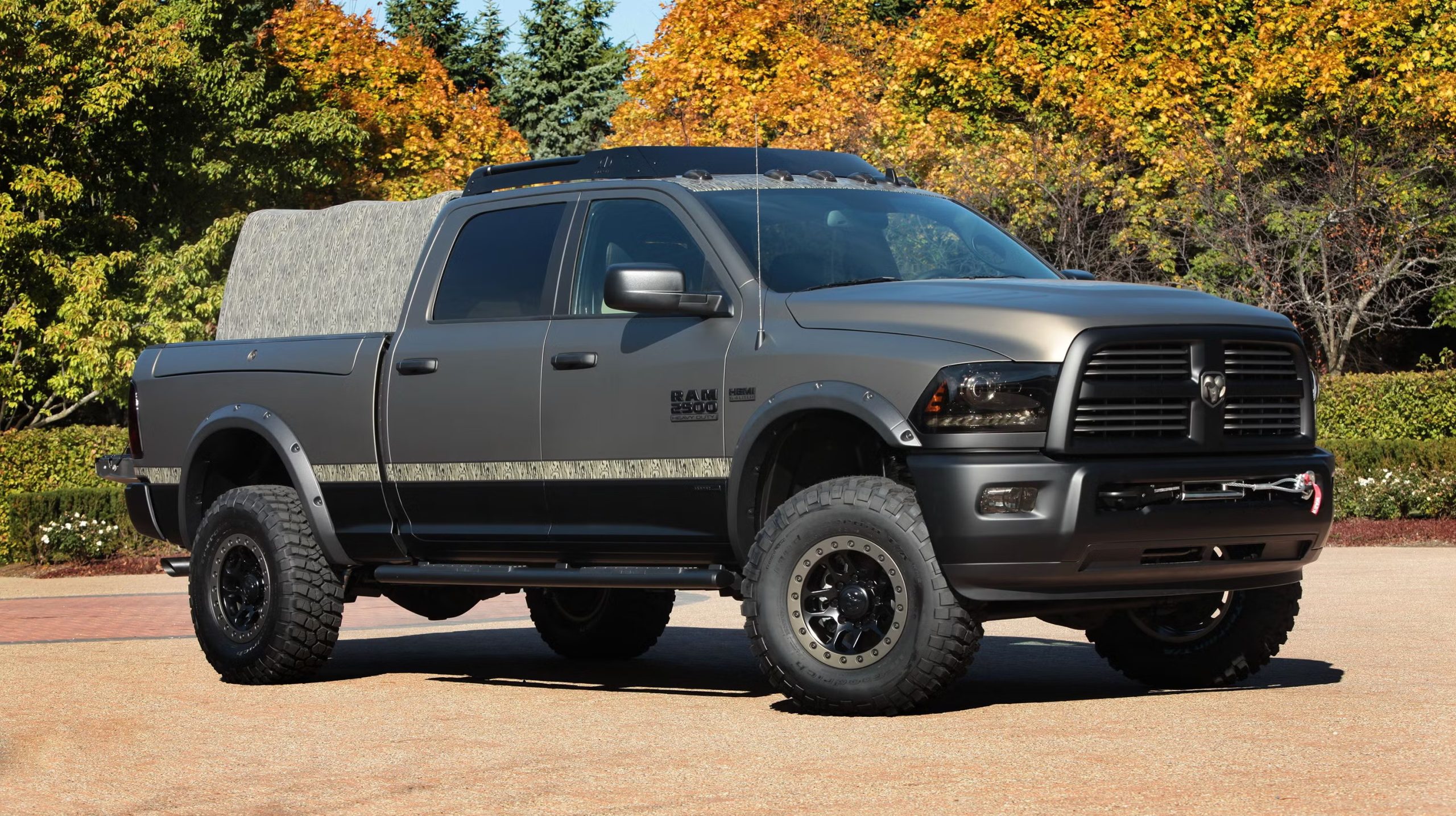
2. Dodge Ram 2500 (Early Models)
While Ram trucks today are generally well-regarded for their bed protection, some early model years of the Dodge Ram 2500—especially those from the late 1990s to early 2000s—were notoriously prone to rust in the bed area.
The issue traces back to a combination of poor corrosion-resistant coatings and bed design that didn’t prioritize drainage and moisture escape. These trucks often featured untreated steel beds or relied heavily on aftermarket liners for protection, which many owners didn’t install promptly.
The truck bed in those Ram 2500s had deep channels and recessed sections that tended to hold water and road salt, especially in northern states with harsh winters.
Over time, this trapped moisture caused extensive corrosion along the bed floor, tailgate, and inside the wheel wells. The problem was exacerbated by insufficient seam sealing at the factory, allowing water to penetrate crevices and accelerate rust formation underneath the liner or paint.
Another contributing factor was the material quality used in the beds during those model years. While heavier gauge steel was employed for strength, it lacked modern anti-corrosion treatments such as galvanization or advanced powder coatings.
The exposed steel was highly vulnerable to chipping and scratching, especially given the typical use cases for heavy-duty trucks, which included hauling abrasive materials like gravel, cement, or tools.
In addition, these older Ram 2500s often came with drop-in bedliners rather than spray-in options, which inadvertently worsened the rust problem.
Drop-in liners can trap moisture between the liner and bed, creating a microenvironment ideal for corrosion. Many owners reported rust forming beneath these liners, often unnoticed until damage was severe.
Lastly, rust-prone beds in early Ram 2500 trucks often led to significant repair costs down the line, sometimes requiring entire bed replacements or costly rust treatment.
While Dodge has greatly improved corrosion resistance and bed protection in newer models, owners of these older trucks should be especially vigilant with bed maintenance and consider aftermarket spray-in liners or protective coatings.
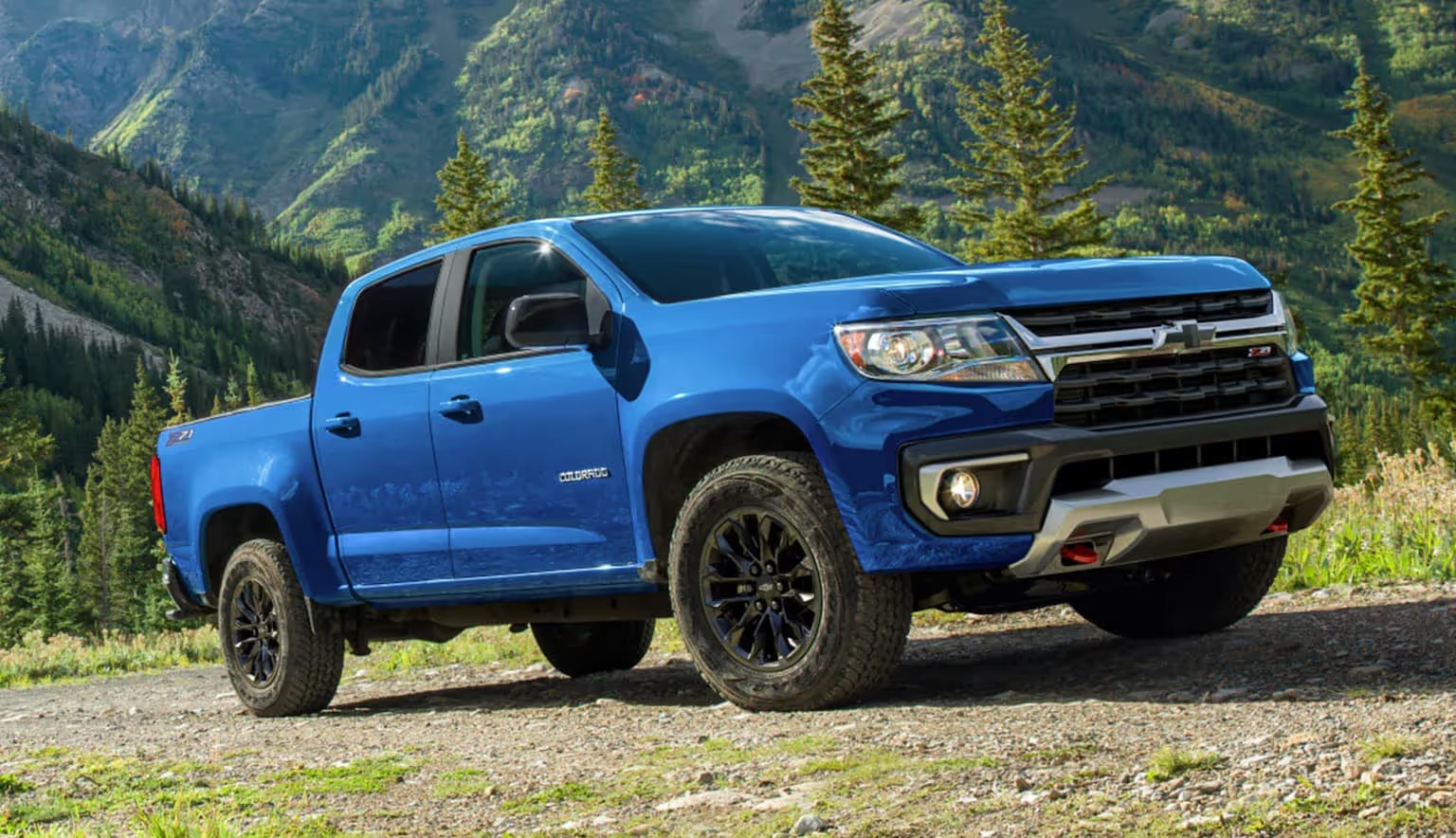
3. Chevrolet Colorado (Early Models)
The Chevrolet Colorado has been a popular midsize pickup, but some early models, especially from the late 2000s and early 2010s, have a reputation for rust-prone beds.
The corrosion problems generally arise from insufficient factory protective coatings and a design that allows water and debris to settle in key areas. The Colorado’s bed is made with steel that, while strong, lacks galvanization or heavy-duty rust-proofing in many trims.
One reason for the rust issues in these models is the bed’s flat, wide floor combined with shallow drainage channels that don’t efficiently expel water.
This results in puddles forming during rain or snowmelt, especially when the truck is parked on uneven ground. Areas like the seams between the bed floor and sidewalls often show early signs of rust due to trapped moisture and dirt accumulation.
Chevrolet initially offered limited bed liner options on the Colorado, often relying on aftermarket solutions for protection.
Without a factory spray-in liner, many trucks were left vulnerable to abrasion and corrosion caused by tools, rocks, and debris dragging against the steel surface. The drop-in liners available often worsened the situation by trapping moisture, accelerating rust under the liner.
The use of lower-cost steel in some early Colorado models also contributed to the rust susceptibility. While cost savings helped keep the truck affordable, the trade-off was evident in corrosion resistance.
Paint chips and scratches, common in pickup beds, often exposed the bare metal underneath, leading to localized rust spots that could spread rapidly if not treated.
Finally, owners of early Chevrolet Colorados with rusted beds often face challenges in resale or trade-in, as rust is a major red flag for buyers.
Proactive bed maintenance, including aftermarket liners, rust-proofing sprays, or professional rust treatments, is critical for extending the life of these trucks’ beds. Chevy improved the rust protection in later generations, but those with early models need to be cautious.
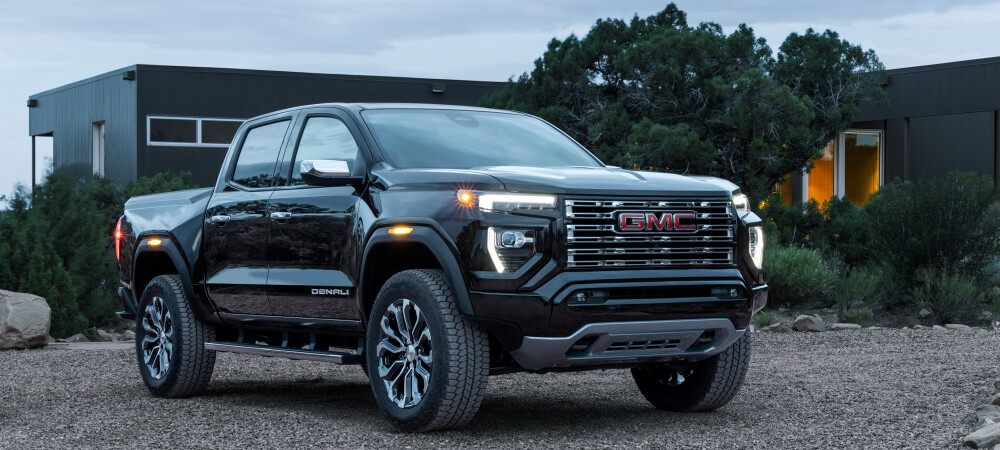
4. GMC Canyon (Early Models)
Sharing much of its design and components with the Chevrolet Colorado, the GMC Canyon’s early models similarly suffered from rust issues in the bed. The combination of basic steel construction and limited factory rust protection left many Canyon beds vulnerable, especially in regions prone to snow, ice, and salt exposure.
The Canyon bed’s flat floor design includes weld points and crevices where water can collect and stagnate, causing rust to develop from the inside out. Like the Colorado, factory protective coatings were often minimal or inconsistent, leading to early corrosion in frequently impacted areas such as the wheel wells, tailgate edges, and bed corners.
GMC typically offered drop-in bedliners for these trucks, but these liners often exacerbated rust problems by trapping moisture against the bed metal. O
wners who failed to install liners or undercoatings promptly found rust appearing in as little as a few years, especially if the truck was used for hauling dirt, gravel, or other abrasive materials.
The quality of steel used was also a factor, with some panels more prone to surface damage that then turned into rust hotspots.
While the Canyon offered good overall value and performance, its bed durability lagged behind competitors who employed galvanized steel or factory-applied spray-in liners.
Moreover, rust repair on early GMC Canyons can be challenging due to limited availability of replacement panels and the high labor costs associated with rust treatment.
For owners intending to keep their trucks long-term, aftermarket spray-in liners or professional rustproofing treatments are essential to preserving bed integrity.
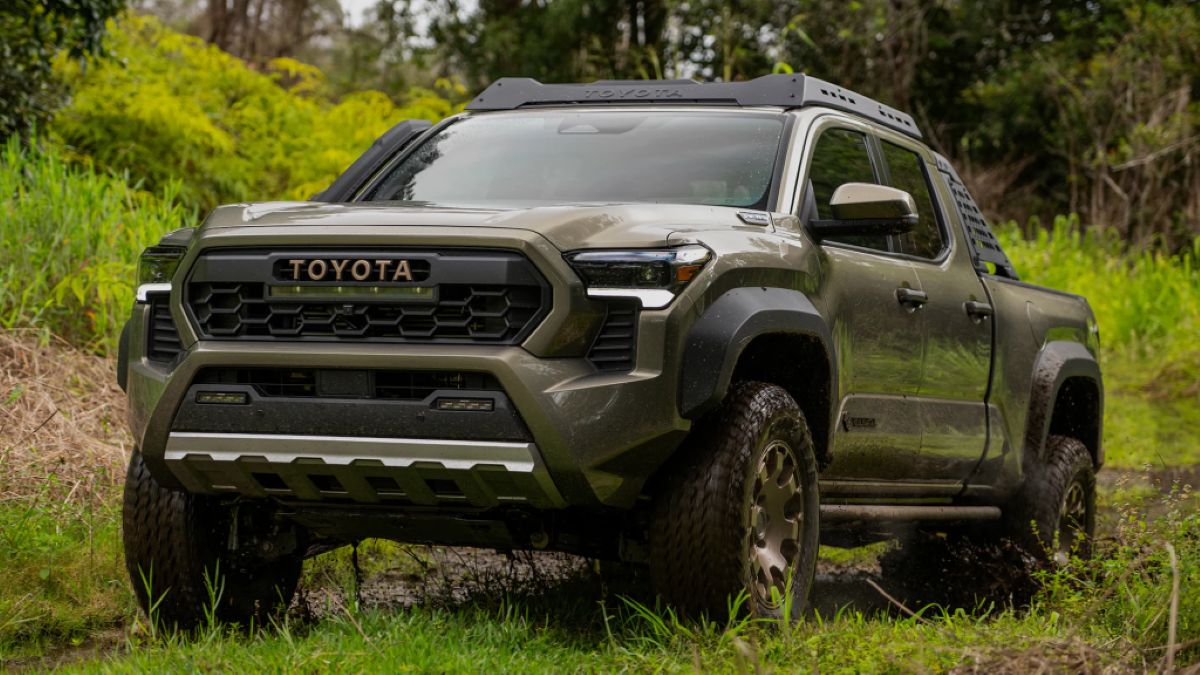
5. Toyota Tacoma (Pre-2016 Models)
Though Toyota is widely recognized for its durability, the Tacoma is not immune to rust problems, especially pre-2016 models.
These Tacomas are known for having rust-prone beds primarily due to minimal factory protective coatings and design features that encourage water and debris accumulation in certain areas. This is especially true in cold, snowy climates where road salt accelerates corrosion.
The bed steel used in older Tacomas, while strong, often came without galvanization or comprehensive anti-corrosion layers. Paint chips and scratches from daily use exposed bare metal, and the limited factory spray-in liner options left the steel vulnerable.
Many owners opted for aftermarket liners after discovering rust beginning to form in the bed floor and wheel wells.
Another design factor contributing to rust susceptibility is the bed’s drainage system.
The Tacoma’s bed features several seams and tight joints that tend to trap moisture and debris, creating ideal conditions for rust to develop underneath the bed surface. These pockets of trapped water often go unnoticed until significant corrosion has taken hold.
Furthermore, Toyota’s factory bedliner options for older Tacomas were limited and sometimes insufficient for heavy-duty use. Owners hauling heavy or abrasive cargo frequently found their beds developing scratches and dents that quickly became rust hotspots without proper protection.
The lack of integrated factory spray-in liners during these model years is a significant reason why many Tacomas from this era develop rust prematurely.
Lastly, while Toyota has improved corrosion resistance in newer Tacomas—introducing factory spray-in liners and better bed coatings—owners of older models should seriously consider aftermarket protective treatments.
Regular inspections, rustproofing sprays, and bedliner installations are critical to prolonging the life and value of these popular trucks.
Also Read: The Engines That Have Survived a Flood, Fire, and Collision — All in One
Truck beds endure some of the toughest conditions any vehicle component faces. They bear the brunt of heavy, abrasive cargo, exposure to moisture, chemicals, sunlight, and rough handling.
Given these challenges, the protection offered by a high-quality bedliner can significantly influence the truck’s longevity, functionality, and overall value.
Spray-in bedliners, especially factory-installed options, have emerged as the premier solution to keep beds safe from scratches, dents, and corrosion. Their permanent bond, durable materials, and precision application make them superior to traditional drop-in liners or no protection at all.
The pickups highlighted for having the best spray-in bedliners—Ford F-150, Toyota Tundra, Ram 1500, Chevrolet Silverado 1500, and GMC Sierra 1500—demonstrate how manufacturers can combine innovative materials, engineering, and manufacturing processes to produce truly resilient beds.
These trucks benefit from liners that are UV resistant, chemical tolerant, impact-absorbing, and integrated seamlessly with other bed features like tie-downs and tailgate steps.
Owners of these pickups can haul heavy equipment, tools, and recreational gear with confidence, knowing their beds are shielded from damage and rust.
Conversely, the trucks identified as having rust-prone beds—Nissan Frontier, early Dodge Ram 2500 models, Chevrolet Colorado, GMC Canyon, and pre-2016 Toyota Tacoma—offer a cautionary tale.
Many of these models suffer from a combination of thin or untreated steel, poor drainage, and limited or inconsistent factory protective coatings.
The resulting rust not only mars the truck’s appearance but can undermine the structural integrity of the bed, leading to costly repairs and diminished resale value.
Owners of these pickups must be proactive in protecting their beds, investing in aftermarket liners, regular cleaning, rustproofing treatments, and prompt repairs to mitigate damage.
Ultimately, the difference between a truck bed that lasts for hundreds of thousands of miles and one that prematurely deteriorates often comes down to the quality of its protective coatings and maintenance.
While factory spray-in liners provide a significant advantage, all truck owners should be vigilant about inspecting their beds, addressing scratches and chips early, and applying additional protective measures where necessary.
For anyone considering purchasing a pickup, understanding these bed protection factors can be invaluable.
Selecting a truck with a reputable factory spray-in bedliner can save considerable money and hassle, while awareness of rust-prone models can guide more informed maintenance and investment decisions.
In the end, a pickup’s bed is more than just a loading area—it’s a critical component that affects the truck’s durability, versatility, and value.
Proper protection through spray-in liners or diligent rust prevention is essential to ensuring that your truck remains a reliable partner in work and play for years to come.
Whether you prioritize factory-applied precision coatings or are willing to take extra steps to protect a rust-prone bed, knowledge is your most powerful tool in preserving your pickup’s hard-earned toughness and longevity.

